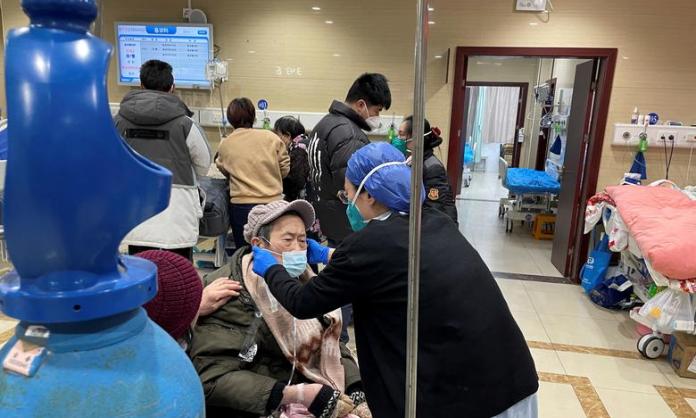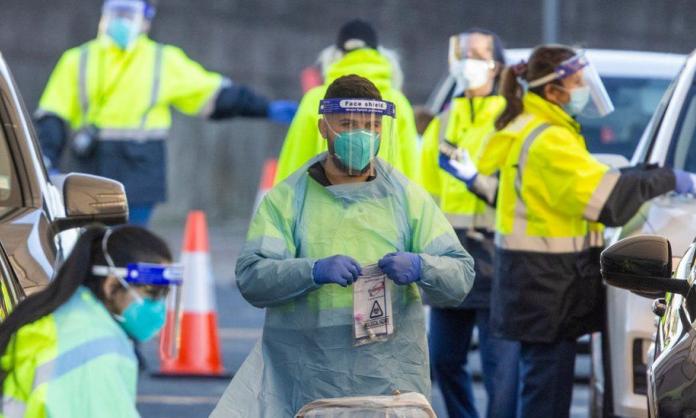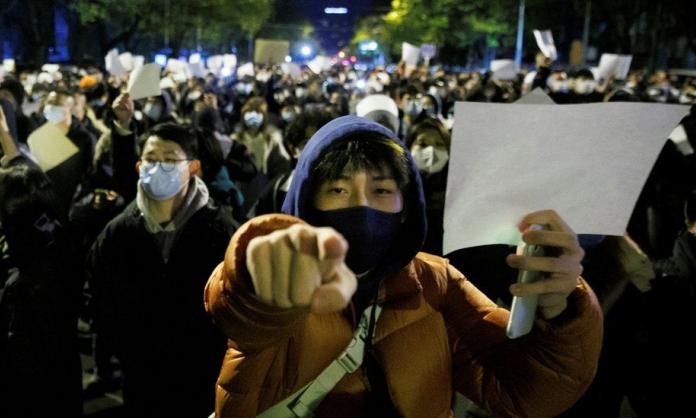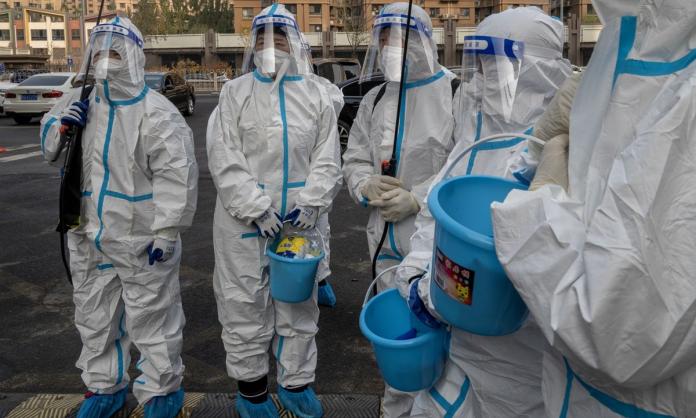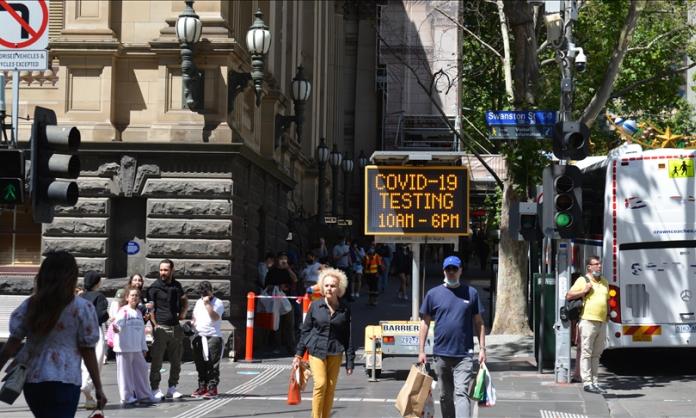Victoria is on a rapid path to full reopening, even as rising case numbers continue to break records. While this is new for many, the state’s students and teachers have been on the front lines of this reckless push for weeks now. And if the situation in schools is anything to go by, we could be in for a dangerous summer.
My experience of working in a Melbourne school, combined with the testimony of many teachers and students and the guidelines provided by the state government itself, paints a picture of safety precautions being cast aside for the sake of returning to “normal”. Thousands of teachers, students and their families are being put at risk just so that the economy can get back to business as usual.
Mary*, a teacher at a public secondary school in Melbourne’s eastern suburbs, told Red Flag, “I’m very confused as a teacher because [initially] there was a careful and staged approach to the return to school, where you had certain levels coming in on certain days and so forth. But the plan has gone down the gurgler now. Because they’re opening up earlier, they’re opening up schools without giving warnings to teachers and students, who are directly impacted by this.”
In the lead-up to the reopening, much was made of the state government’s purchase of 51,000 air purifiers. But so far, only around 2,000 have actually found their way into schools, meaning that most teachers are forced to rely on open windows. As the weather heats up, students and staff face the possibility of studying in blistering temperatures, high winds and bushfire smoke.
When pressed about the slow rollout of air purifiers, Education Minister James Merlino said that it will take “weeks and months” to equip schools fully. Yet the return to in-person teaching has been fast-tracked, with the Education Department declaring that every student will sit their exams next month, even if they’re a primary close contact of a positive case.
The laissez faire approach to COVID-19 safety also extends to the hiring of staff. As a casual exam supervisor at a school in Melbourne’s east, at no point was I asked whether I’d been vaccinated or recently tested before working at the General Achievement Test on 5 October. For all they knew, I was spreading COVID-19 to unvaccinated students.
On top of this oversight, there’s no social distancing in hallways, the cleaning procedures are lax, and many of the protocols followed last year have been abandoned. The atmosphere of caution that characterised the 2020 exams (at which I also worked) has all but disappeared.
This is not surprising. In fact, it’s wholly in line with the government’s relentless campaign to downplay the seriousness of the current situation. For weeks, it’s encouraged a sense of complacency to soften up the population for a reopening that risks even higher numbers of cases, more deaths and further pressure on the health system.
Students I’ve spoken to have reported similar experiences to mine as they go back to the classroom. Holly, a year 12 student at an inner-city public school, told me that safety measures were “much more stringent last year”, but that now things are no different to what they were pre-pandemic. There’s been no sign of the promised air purifiers, and she dreads having to study with open windows in the summer heat.
Mary’s experience is the same. “We’re all at risk now”, she says. “There are 25 people in each classroom at a minimum, so how can we socially distance? How can I socially distance myself when there are 25 students breathing on me? There’s talk of having open-air classrooms. How’s that going to work? Are they going to set them up on the oval? And charge the laptops there?”
Another area of concern is the announcement of new contact tracing and isolation procedures for when there is a positive case. From now, vaccinated close contacts will have to isolate for only seven days instead of the full fourteen, and exemptions will be given so that they can still sit their exams at school.
The effects of this new and dangerous contact tracing strategy have already been felt, and fought, at schools across Melbourne. My former high school is an example. Two weeks ago, a positive case attended class for two days—on a Tuesday and Wednesday. The school was notified early on Saturday, but was permitted to inform the broader school community only on Sunday evening, leaving more than 24 hours for possible close contacts unknowingly to transmit the virus.
Throughout this process, the school was never officially closed—students and staff were simply told they couldn’t be on site. This suggests that the official list of school closures understates the degree to which the virus is spreading in schools.
At my school, the Health Department’s primary concern once the school was shut down seemed to be rushing students and teachers back onto campus as quickly as possible, regardless of the effect on public health. This meant issuing “study exemption” certificates to those deemed “moderate close contacts”. A moderate close contact could have sat one seat removed from a positive case for an hour-long lesson in a poorly ventilated room and then be allowed to return to class within days.
It also meant announcing on Wednesday (three days after informing the community about the positive case) that classes were to go back in person the following day, with those moderate close contacts included.
In response, teachers called an emergency sub-branch union meeting for later that day, at which the 70 members in attendance voted unanimously to support a motion instructing their health and safety representative to issue a cease-work. Their motion called on school leadership to “take the initiative to protect staff and students from contact with the close contacts of a positive case by keeping the school closed and teaching remotely”.
Following a WorkSafe inspection, the cease-work was rejected, but the process bought teachers valuable time. The school returned the following Monday rather than Thursday, and under pressure from the community, close contacts were not brought back on site. This is a big win—learning remained remote for an extra four days, giving more space for testing, cleaning and contact tracing.
Perhaps more importantly, the situation alerted the union and then the Education Department to the new “study exemption” procedure, and they succeeded in pressuring the Health Department to drop it. This challenge therefore resulted in the defeat of a dangerous policy in all schools across the state.
From failing to list school closures to publicising transmission days after the fact, the Health Department has created a climate of confusion and fear. The changes to contact tracing are opening dangerous gaps that put the health of whole school communities at risk and leave teachers in the dark. “The silence stuff is really problematic. Basic human solidarity surely means we tell each other basic stuff about our safety”, one teacher and union activist at the school told me.
Mary concurs. “This is putting our students at risk. And staff at risk”, she says. “For older people like me, there’s still a real chance that we’ll get COVID—even if, I hope, we don’t die from it. We can still get really sick. Even people who are double vaccinated can end up in hospital.”
As cases continue to surge, the risk of contracting the virus is higher than it’s ever been in Victoria. Vaccination rates among under-18s lag well behind the general population, which makes the fight against negligent contact tracing and “study exemptions” at schools even more important. This terrifies teachers like Mary. “Kids can get sick and die. If I was a parent and my child who was under 12 hadn’t been vaccinated, there’s no way I’d feel safe about them going to school” she says. “Teachers have done an amazing job”, she continues, “We’ve worked our butts off to create the best environment in online classes. It’s been phenomenal. And it’s about time that we recognised just how much pressure and how much hard work teaching involves. Much like nursing, teaching is seen as ‘women’s work’ and degraded.”
Teachers aren’t alone in this struggle. Holly and a group of other Victorian high school students have recently launched the Don’t Let Schools Be Superspreaders petition to demand adequate ventilation, proper contact tracing and other safety measures. They also argue that online learning options should be maintained.
The coming weeks will present new challenges, particularly as tens of thousands of students are packed into classrooms and assembly halls for their VCE exams. As the Victorian government and their friends in the business community continue to sell us the lie that opening up is safe, we need to be fighting for basic safety measures in schools and workplaces everywhere.
*Name changed






